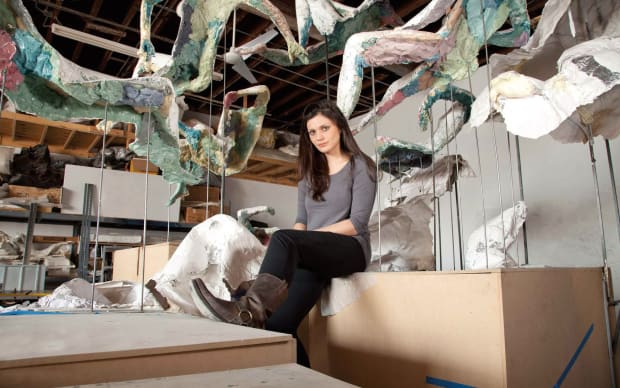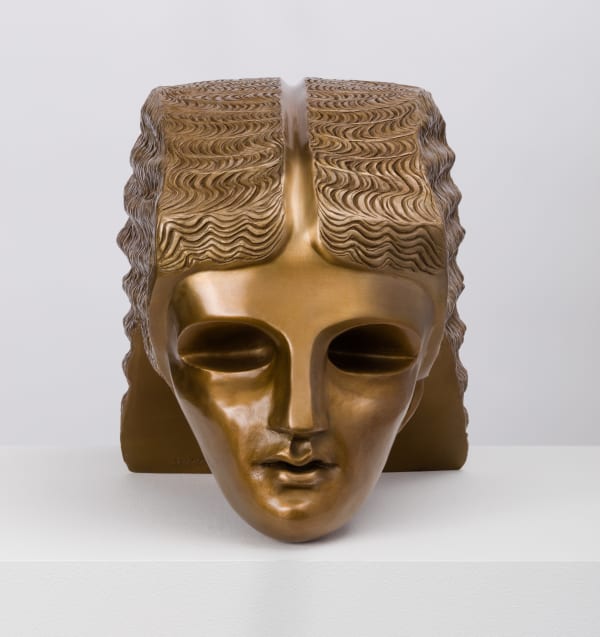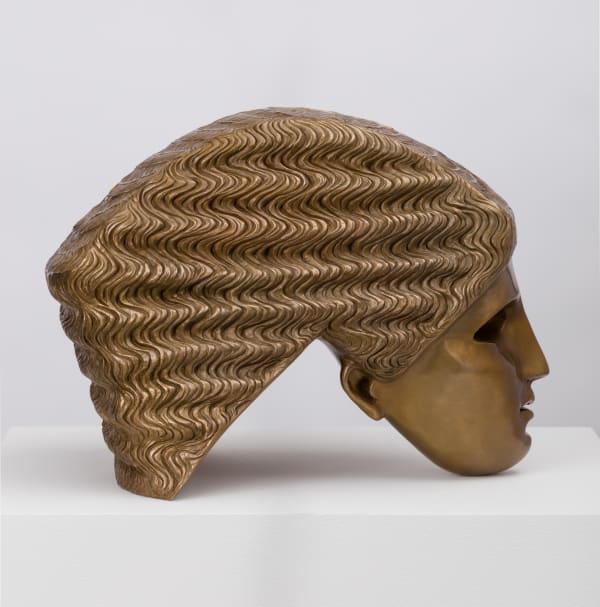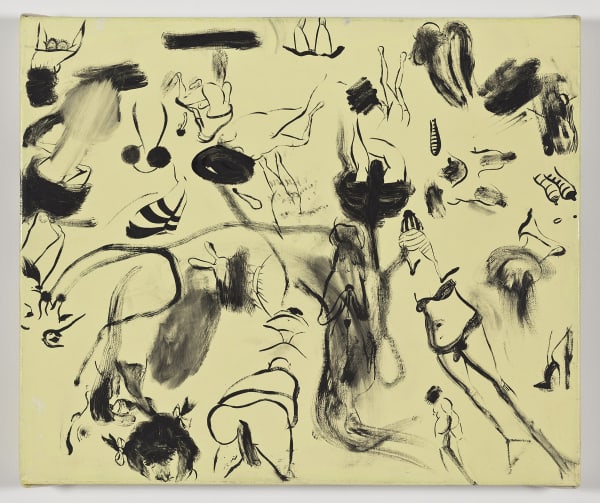Shulamit Nazarian is pleased to present High Contrast, a group exhibition curated by New York-based artist Summer Wheat. Presented in the gallery's second exhibition space, High Contrast features works by Diana Al-Hadid, Sarah Peters and Sue Williams. It will be on view concurrently with Wheat's solo exhibition, Anything Can Happen, from March 20 - May 1, 2021
High Contrast has been organized to provide viewers insight into the practices of artists that have been influential to the development and growth of Summer Wheat's aesthetic and material process. Each artist has been selected for a quality of their practice that Wheat has found particularly informative, in turn providing a reciprocal conversation that links both shows. The notion of high contrast refers to images and objects that display a full range of tones, often with bright and bold features, a commonality found either formally or conceptually in each artist's work. Also central to these artists’ practice is a critical examination of specific moments in Art History. Further to this, Wheat was selected Diana Al-Hadid to highlight her relentless exploration of material; Sarah Peters for her keen reinterpretation of figuration in Classicism, with a focus on gendered power dynamics; and Sue Williams for her use of line and lyrical forms that bravely critique social and political relations. Together, many of the themes that are central to Wheat’s own practice can be found within the work of this curated group exhibition.
-

-
Diana Al-Hadid (b. 1981, Aleppo, Syria) currently lives and works in Brooklyn, NY. She received a BFA in Sculpture from Kent State University in 2003, and an MFA in Sculpture from Virginia Commonwealth University in 2005. In 2007, she attended the Skowhegan School of Painting and Sculpture. Al-Hadid has received numerous awards, including: a Joan Mitchell Grant; Louis Comfort Tiffany Grant; USA Rockefeller Fellowship; New York Foundation for the Arts Grant; and a Pollack-Krasner Grant. Her work is included in many public collections, such as the Whitney Museum of American Art, New York; the Virginia Museum of Fine Arts, Richmond; the Museum of Fine Arts, Houston; The Weatherspoon Art Museum, Greensboro; and The Judith Rothschild Foundation, New York. Al-Hadid has had solo exhibitions at Secession, Vienna, Austria; Columbus College of Art and Design, Columbus, OH; Weatherspoon Museum of Art, Greensboro, NC; Virginia Museum of Fine Arts, Richmond, VA; Nasher Sculpture Center, Dallas, TX; Centro de Arte Contemporánea, La Conservera, Murcia, Spain; Nevada Museum of Art, Reno, NV; and The Hammer Museum, Los Angeles, CA.
-

-

-
Sarah Peters (b. 1973) lives and works in Queens, NY. Peters was educated at Virginia Commonwealth University (MFA), The University of Pennsylvania (BFA), and The Pennsylvania Academy of Fine Arts (Certificate). The artist is a recipient of awards and residencies from John Michael Kohler, WI and New York Foundation for the Arts (NYFA), NY (2011); The Fine Arts Work Center, Provincetown, MA (2010); and The Marie Walsh Sharpe Art Foundation Space Program, Brooklyn, NY (2008). Solo and two-person exhibitions include Halsey McKay Gallery, New York, NY (2017); Eleven Rivington, New York (2015); 4 AM, New York (2015); Bodyrite (with Mira Dancy) at Asya Geisberg, NY (2014); Edward Winkleman Gallery, NY (2007, 2010); and John Davis Gallery, Hudson, NY (2013). Group exhibitions include Objects Like Us, The Aldrich Contemporary Art Museum, Ridgefield, CT, curated by Amy Smith-Stewart and David Adamo (2018); Galerie Eva Presenhuber, Zurich, Switzerland (2018); and Rodin and the Contemporary Figurative Tradition, Frederik Meijer Gardens & Sculpture Park, Grand Rapids, MI (2017), among others. Her work has been reviewed and featured in publications such as The New York Times, Art in America, Artforum, and The Brooklyn Rail.
-

-
-
Sue Williams (b. 1954, Chicago) lives and works in New York. She received her BFA in 1976 from the California Institute of the Arts in Valencia. Working predominantly with oil and acrylic on canvas, Williams came to prominence in the early 1980s, exploring themes of postmodern feminism and personal experience. Influenced by the aesthetic of Abstract Expressionism, Williams merges colorful abstraction with feminist sexual imagery, inspiring a dynamism and unconventional theatricality unique to her work. Williams challenges sexuality, gender, violence, and aggression through her signature cartoon-like swirls of abstraction. Williams has exhibited extensively throughout the United States and Europe. Her works have been shown in exhibitions in major institutions including the Whitney Museum of American Art, Museum of Modern Art, New York, Museum of Contemporary Art, Los Angeles, MoMA P.S. 1, Palais de Tokyo, Paris, and the Institute of Contemporary Art, Boston.













